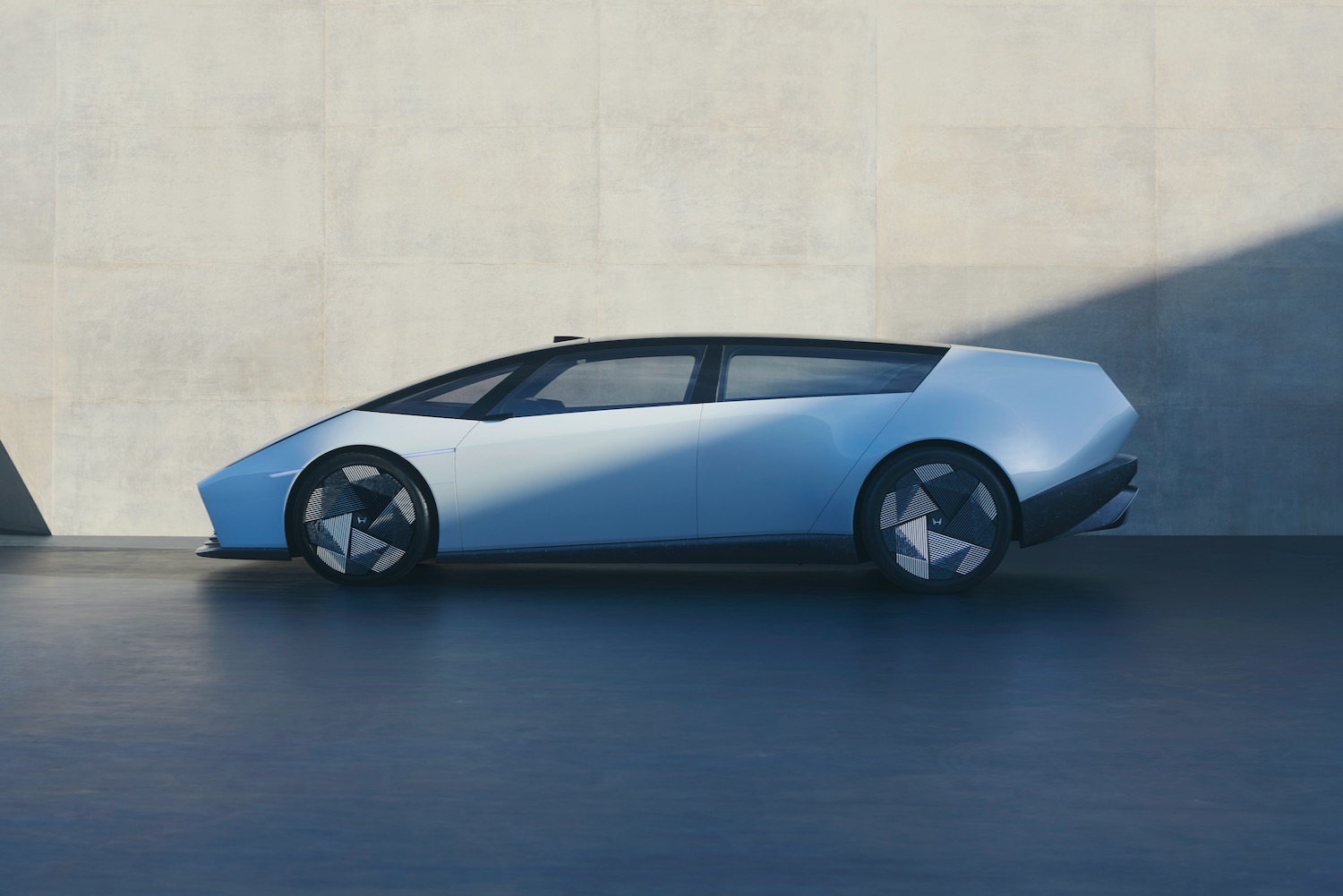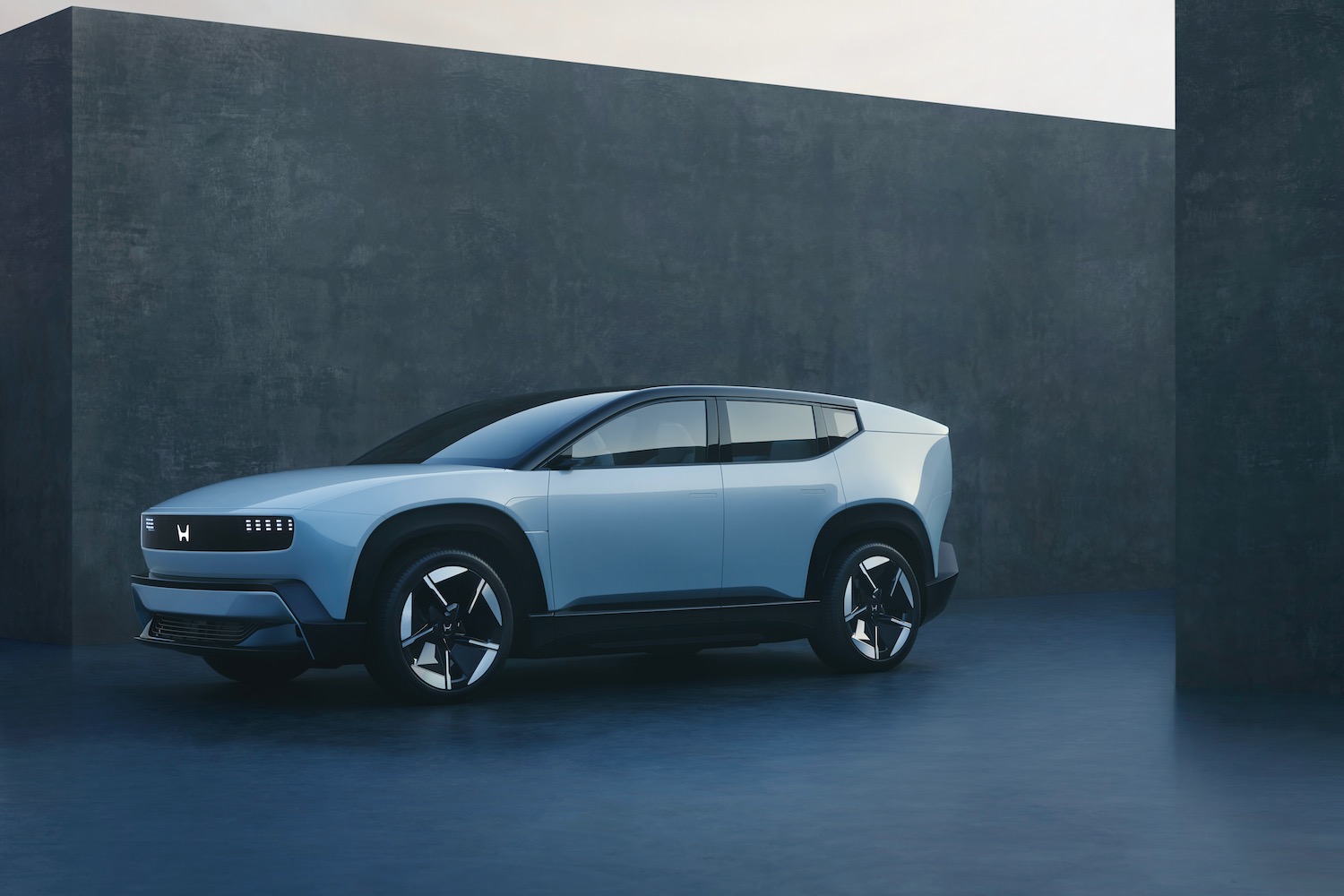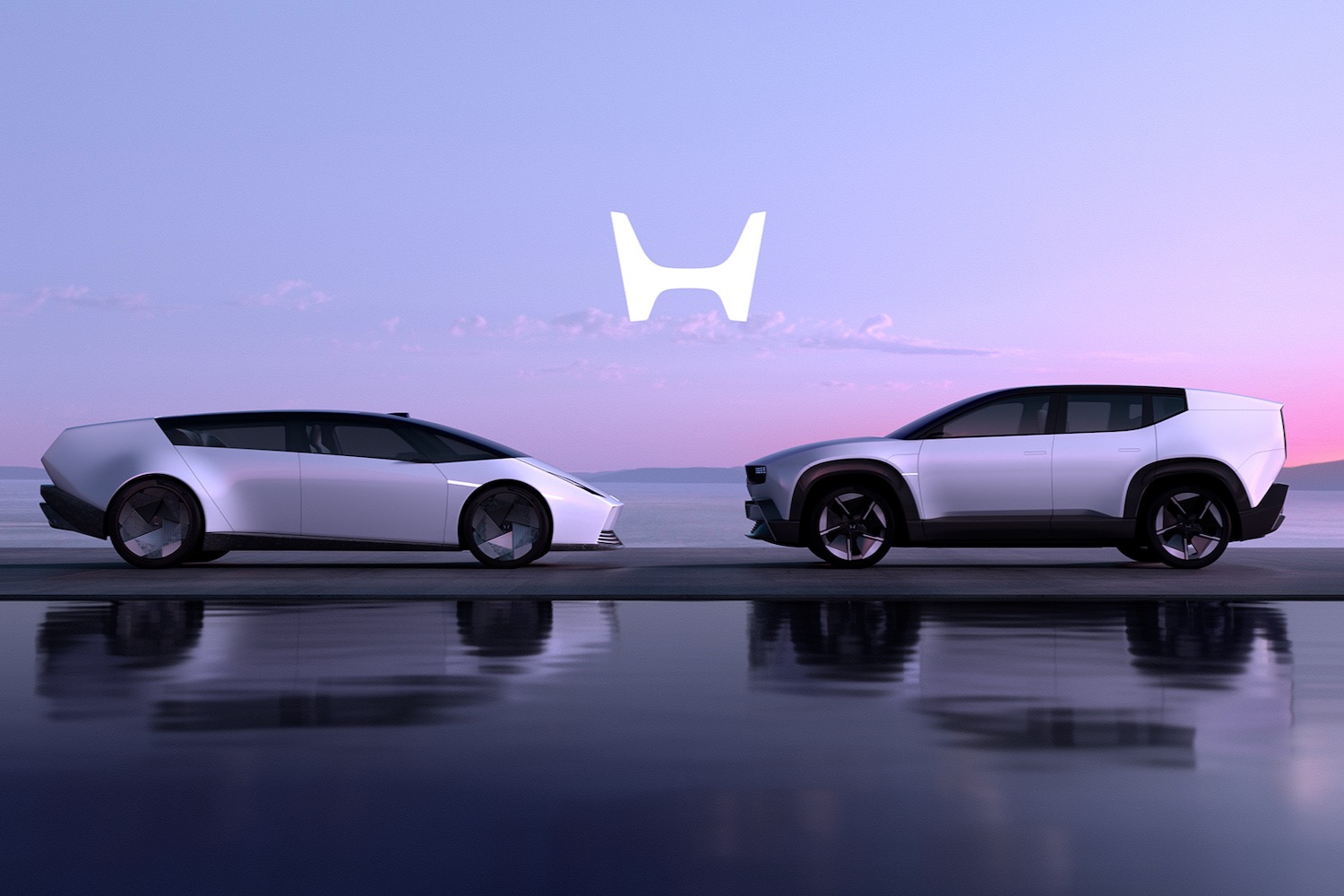
Honda’s next-generation electric vehicles are a step closer to production. At CES 2025, the automaker unveiled prototypes of the 0 Saloon and 0 SUV, the first two of its 0 Series EVs that will start rolling off assembly lines in Ohio next year.
The two EVs follow 0 Series concept cars Honda unveiled at CES 2024. These are closer to what buyers can expect to see in showrooms, hence the label of “prototype” rather than “concept.” How close exactly? When Honda unveils a prototype, that vehicle generally makes the transition to production with minimal changes. But that would be particularly remarkable here.
They still look like concept cars

The 0 Saloon prototype maintains the low-slung wedge shape of last year’s Saloon concept, making it look more like a 1980s supercar than a modern electric sedan (saloon is a common term for sedan outside the United States). The 0 SUV is more of a departure from its predecessor, the van-like Space-Hub, but it still has interesting styling features of its own, like a tapered tail likely aimed at reducing aerodynamic drag.
Honda didn’t offer too much technical detail but confirmed a steer-by-wire system similar to what’s currently used on the Tesla Cybertruck and the Infiniti Q50 before that. Steer-by-wire eliminates the mechanical connection between the steering wheel and tires, something Honda believes will offer improved handling through closer integration with other electronic systems.
Levelling up driver-assist tech

The 0 Series EVs will also feature a Level 3 driver-assistance system, meaning drivers will be able to take their eyes off the road in at least some situations. Honda began offering this tech on a limited basis in 2021, but only in Japan. Honda is open to offering its next-generation Level 3 system in the U.S. but views the patchwork of state regulations governing this tech as an obstacle.
In the 0 Series, Level 3 capability will initially be available only in traffic congestion on highways, similar to the Drive Pilot Level 3 system Mercedes-Benz rolled out in California and Nevada in 2023. Greater functionality will be added later through over-the-air (OTA) updates.
Honda is also integrating AI in the hope of finding additional performance improvements. It plans to use an unsupervised learning model from Helm.ai along with “behavior models of experienced drivers” to help the AI learn more quickly. Honda has also done some of its own development work, which the automaker believes could be useful in teaching driver-assist systems how to better cooperate with other road users by, for example, more quickly figuring out when to yield.
Computing rethink

The 0 Series EVs will also be equipped with a new operating system called Asimo, in honor of the Honda-developed humanoid robot that was a fixture of auto shows and trade shows from 2000 to the early 2010s. The Asimo OS will run the user interface and all vehicle systems and will be fully OTA updateable, Honda says.
Building on that, Honda has signed an agreement with Renesas Electronics Corporation to develop a system-on-chip for future 0 Series models. The goal is to consolidate the numerous control units responsible for individual vehicle systems into one core unit. This could help reduce energy consumption to help maximize range and avoids the problems inherent in sourcing control units from multiple suppliers with multiple software stacks.
More charging options

All 0 Series EVs will be built with Tesla-style North American Charging Standard (NACS) ports. Honda is working to deliver access to the Tesla Supercharger network later this year, and it’s part of the eight-automaker consortium launching the Ionna fast-charging network. All told, Honda expects its EV customers to have access to 100,000 public charging stations by 2030.
For home charging, the 0 Series will also benefit from the ChargeScape joint venture between Honda, Ford, Nissan, and BMW. The three automakers hope to launch a software platform by 2026 that, among other things, allows customers to send excess power back to the grid.
U.S.-built
Honda plans to launch a production version of the 0 SUV in North America during the first half of 2026, with the 0 Saloon following later in the year. Both models will arrive in North America first, followed by other markets like Europe and Japan. They’ll likely also form the basis for the Afeela EV from Sony Honda Mobility, also scheduled for a 2026 launch.
In the meantime, Honda continues to rely on General Motors to stock its showrooms with electric models with the Honda Prologue and Acura ZDX — two electric SUVs derived from the U.S. automaker’s models.













